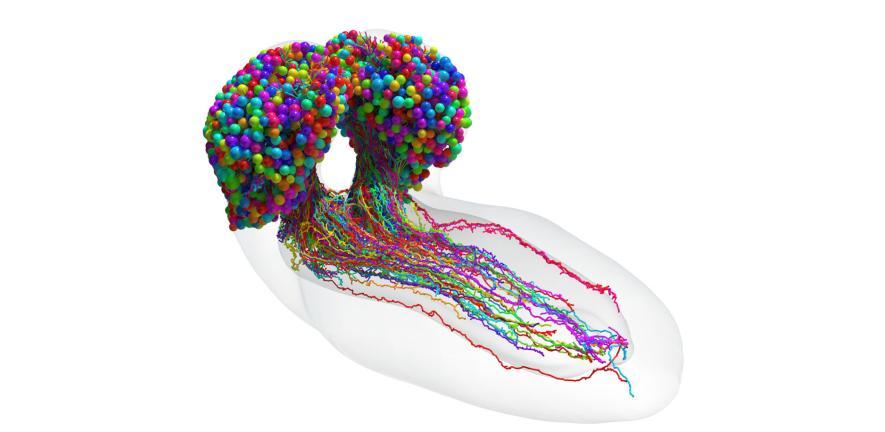
Submitted by Emily Rigby on Mon, 13/03/2023 - 12:07
A team led by University of Cambridge researchers, including Professor Albert Cardona of PDN and the MRC LMB, and Dr Michael Winding at the University of Cambridge’s Department of Zoology, have built the first ever map showing every single neuron and how they’re wired together in the brain of the fruit fly larva. The study, which also involved collaborators from both the UK and the US, is published in the journal Science.
This new research will help scientists to understand the basic principles by which signals travel through the brain at the neural level and lead to behaviour and learning.
This is the largest complete brain connectome ever to have been mapped. It is a huge advance on previous work to map very simple brain structures including the roundworm C. elegans, which only has several hundred neurons.
Imaging entire brains has until recently been extremely challenging. Now, technological advances allow scientists to image the entire brain of the fruit fly larvae relatively quickly using electron microscopy, and reconstruct the brain circuits from the resulting data.
Although current technology is not yet advanced enough to map the connectome of more complex animals, the researchers believe that their new map will be a lasting reference for future studies of brain function in other animals.
To build a picture of the fruit fly larva connectome, the team used thousands of slices of the larva’s brain imaged with a high-resolution electron microscope, to reconstruct a map of the fly’s brain - and painstakingly annotated the connections between neurons. As well as mapping the 3016 neurons, they mapped an incredible 548,000 synapses.
The researchers also developed computational tools to identify likely pathways of information flow and different types of circuit patterns in the insect’s brain. They found that some of the structural features are similar to state-of-the-art deep learning architecture.
The next step is to delve deeper to understand, for example, the brain circuitry required for specific behavioural functions, such as learning and decision making, and to look at activity in the whole connectome while the insect is doing things.
Adapted from a press release by the University of Cambridge
Reference
Winding, M. et al: ‘The connectome of an insect brain.’ Science, 10 March 2023. DOI: 10.1126/science.add9330

